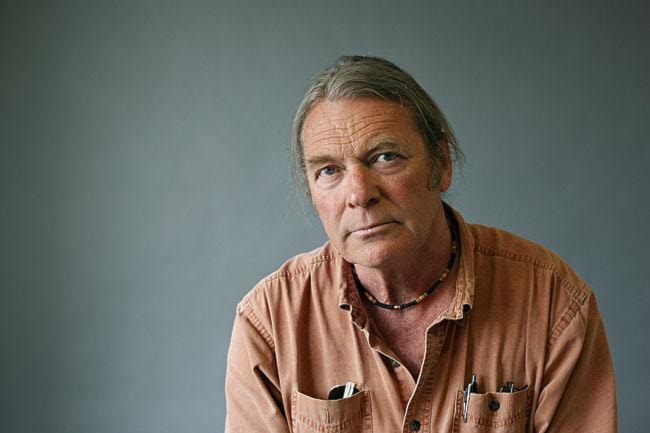When a 15-year-old Andrew Macdonald first came to the Yukon in 1974, Main Street’s short ribbon of asphalt was the only pavement in the territory.
“It was truly the last frontier. I kind of miss the wildness of it,” he said.
Now, almost four decades later, the place where Macdonald came in search of adventure has become his home and, more importantly, his artistic inspiration.
Macdonald is a self-taught landscape painter who works primarily with watercolour. His work is reminiscent of Tom Thomson and the Group of Seven. But unlike many landscape lovers, Macdonald is as enthralled by the forest’s details as he is by sweeping vistas and glowing sunsets.
“I really like small, intimate scenes that you could see almost anywhere,” he said.
He’s been painting almost exclusively landscapes since he started his career. Since his first show in 1984, Macdonald’s work has been gaining in popularity, with shows not just in the Yukon but across the country, allowing him to make a viable living from his art.
His latest show, City of Gold, opens today at the Chocolate Claim in Whitehorse, but it’s definitely a departure from his usual work.
Macdonald took his love of landscapes and applied it to Dawson City in the winter. City of Gold is a series that looks at Dawson’s historic beauty, but it’s not a recreation of tourism company cliches. The paintings have a quiet, thoughtful quality to them, showing the Klondike town as it lives most of the winter, before Holland America buses disgorge the madding crowds onto its wooden sidewalks.
It’s the first time Macdonald has ever focused on painting buildings and a town. When he was working on the show, he approached it the same way he does landscapes. His primary research tools are a camera and sketch pad, which he carries while he wanders, looking for inspiration.
“It’s a wonderful place to just stroll around, and I just wanted to paint Dawson. I’d wanted to for a long time,” Macdonald said.
The photos and sketches form the skeletons of Macdonald’s works. From there, he develops his mood with careful strokes, creating whatever feel he wants.
The paintings have an almost documentary quality to them, similar to fine-art street photography.
“Snow scenes are just so typical of where we are. If you step out the door in the winter, that’s what you see. They’re also more interesting, with smooth arcs and more room for contrast,” he said.
Macdonald’s passion for painting is easy to explain. He grew up in Glen Williams, the southern Ontario town that fellow painter A.J. Casson made famous.
“Back in the ‘30s he used to live just down the street from where I grew up, and the Group of Seven hung out there a lot,” Macdonald said.
A few years ago, Macdonald returned to Ontario to work on a show he called Removing Mountains, which featured many homages to Casson’s work.
“It was kind of a nostalgic return to my roots. That show sold out in two hours,” he said.
The little town left its mark on Macdonald and those artists, but it was the Yukon that captured his heart, and that connection is evident in his works.
City of Gold opens today at 5 p.m. at the Chocolate Claim.
Contact Jesse Winter at
jessew@yukon-news.com
